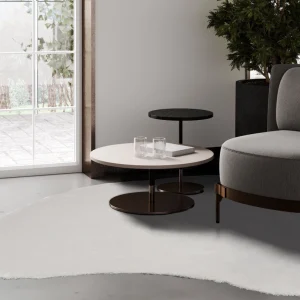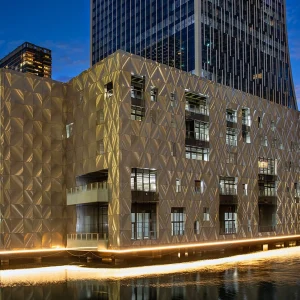For many people, the word design means simply making things look good – but design has a role to play in life or death situations too.
Take the protective suits worn by heath workers treating people affected by the Ebola epidemic in West Africa. The suits have to be protective, obviously, but they also have to allow the wearer to move with ease, and preferably in reasonable comfort.
Photo: JHU/Will Kirk
Until now, the equipment used hasn’t really been up to the job, according to Jhpiego, a global health organisation affiliated to John Hopkins University (JHU), with too many people being infected while they attend to people suffering from the disease.
Jhpiego recently organised a weekend design challenge at JHU, which aimed at generating ideas for a new, more affective Ebola protection suit.
Photo: JHU/Will Kirk
‘It’s abundantly clear to all that we are sending our most valued and talented medical workforce to fight Ebola with less than perfect gear,’ says Dr. Harshad Sanghvi, Jhpiego’s Vice President for Innovations and Medical Director. ‘The nurses and doctors who contracted Ebola in West Africa are incredibly smart and well-trained. They depended on the best gear we have now to protect them. We must do better.’
Photo: JHU/Will Kirk
Youseph Yazdi, Executive Director of CBID, adds: ‘We organised this event with the utmost sense of urgency, from concept to event in less than 10 days. The entire event is focused on developing creative new solutions that can be manufactured and in the field in a matter of months, not years.’
According to Jhpiego the weekend challenge produced four promising concepts for selected teams to address: cooling of PPE to allow users to keep them on longer; safer and more rapid removal of PPE; non-PPE patient isolation units; and extremely low-cost and easy-to-use protective gear for those caring for loved ones at home.
Photo: JHU/Will Kirk
Judith Britz, Executive Director of the BioMaryland Center and a judge at the event, applauded Jhpiego and CBID for pulling together such diverse players in record time. ‘That’s what it will take to solve this problem, a diverse range of experts and viewpoints. The issues with PPE require a systems approach, with both technical and implementations expertise,’ she said.
BioMaryland provided $25,000 in seed grants for the best teams and ideas emerging from the weekend design challenge. ‘The State of Maryland is pleased to partner with Johns Hopkins CBID, Jhpiego, Clinvue and other participants to assist with rapid deployment of funding critical to taking the next steps beyond this design challenge,’ said Britz.









